FROM GROZNY TOWARD INGUSHETIA
ANTICIPATION....
Like all travel, our experiences to date in Dagestan and Chechnya faded into an elusive pastel haze as we sped out of Grozny city's outskirts, heading south-west toward the mountains of Ingushetia.
And what would the strange and little-known Republic of Ingushetia hold for us, we wondered? We had read as much about the region as we could find but sadly most of the documentation was prefaced by chilling travel warnings of insurgency and kidnappings. And they were dire:
"WARNING! Visitors are in fear of murders and kidnappings by local gangs or by government forces, high profile crimes, periodic civil disorders and terrorist activity.... If you are a foreigner your presence in Ingushetia might be still monitored by the FSB. Though no attack of the Ingush rebels on the foreign visitors (has been) ever recorded, people do disappear after the FSB (Federal Security Service - once part of the KGB) raids." Wikivoyage (updated June 2019).
Being so recently posted, they were probably the most disturbing of all our travel warnings to the North Caucasus. Furthermore, the travel information about all the sites we were to visit during our stay was stamped with a universal "Requires a Russian FSB Permit, especially for foreigners". Oh, so welcoming.....
The good news was that the countryside and the numerous watch towers for which Ingushetia is so famous, did look stunning. And very reminiscent of our beloved country of Georgia, once a Russian republic and just kilometers to the south of the Greater Caucasus ranges. Oh, and the local people were apparently very welcoming. Well, it sure didn't sound quite like that....
We had travelled through Georgia with our guide Keti and driver Vano in 2015, visiting the far northern regions of Mestia and Ushguli, very close to the border zone of the North Caucasus. Here we found a surprising peace in a profoundly spiritual land blessed with beautiful verdant forested, snow peaked mountains and gushing streams, age old traditional villages and haunting watch towers.
And it was here that our friend Keti, a deeply religious young woman, almost succeeded in her quest to entice us into the world of holy devotion.... If anywhere, one could take on religion of any faith it would we thought, be in the strange lands of the Caucasian highlands; where Christianity and Islam sit as odd bed fellows, side by side. And reality is somewhat abstract.
A SURGEON WHO TOOK THE HIPPOCRATIC OATH TO THE ULTIMATE DEGREE....
Abdullah was intensely passionate about the North Caucasus, and not surprisingly especially that of his native Chechnya and Ingushetia. Throughout our travels, he generously spent much of his time explaining the complexities of the region's social and political history.
And in real life raw detail, his horrific experience of the Chechen Wars and following insurgencies.
Yet even with Abdullah's knowledge and detailed explanations, it was extremely difficult to take in the scope and nature of the conflict that had happened, and indeed what was still occurring in these wild and troubled lands. Quite frankly, the labyrinth of information was so huge, so shocking and so mind blowing, it was almost impossible to process. And I might add, somewhat difficult to later synthesise into comprehensive text.
On our way out of Grozny, Abdullah pointed out what was essentially a small non-descript village. It was apparently Alkhan Kala, the home village of the heroic figure, Dr Khassan Baiev.
Khassan Baiev was by training a specialist cosmetic surgeon who during the Chechen Wars, continually risked his life by providing emergency care to those badly injured during the relentless bombing of Grozny and its surrounds. Reportedly the only surgeon for some 80,000 residents of Grozny, he ran a makeshift trauma hospital with a skeleton team of nurses until it was bombed and destroyed. He then operated, often without use of scarce anaesthetics, in the basement of his house until that was also bombed, re-built and bombed again.
Despite threats, Khassan steadfastly operated on Chechens and Russians alike; citing the Hippocratic Oath and refusing to give up treating the injured, even after his arrest and temporary imprisonment by Russian forces.
By the end of the Second Chechen War, a price was put on his head by the Russians. At the same time one of the Chechen factions wanted him dead for operating on Russians. Finally, human rights workers helped him gain asylum in the USA where he was later joined by his family.
Deeply traumatised, Khassan sank into debilitating depression and post-traumatic stress, for which he has had ongoing intensive psychological treatment. He has since returned to Grozny and is now an outspoken advocate for mental illness; a subject not generally talked about in Chechen society. On hearing his story, we took a deep breath. Khassan was a truly inspirational identity in a deeply troubled outer, and inner world.
His book "The Oath: A Surgeon Under Fire" which details his memoirs through the two Chechen Wars, is available on-line.
TOWARDS INGUSHETIA - ABDULLAH'S FAMILY LANDS
As we drove out of the city and into the more rural parts of western Chechnya, we commented that many of the houses sitting side by side were identical; most being quite substantial in size with garrison-like brick walls and enormous gates.
Abdullah proudly explained to us about the Chechen society. "Ah, you see - we are traditionally a classless society. We have no kings and queens. Everyone is equal". He went on to explain that the three houses we had just passed were built by three brothers. So as not to outdo each other, they built their houses identically.
We were still perplexed however about how the society organises itself without leaders or some sort of class system. The following article from Relief Web International explains (well, sort of...):
"The mountainous nature of the landscape of the Caucasus brought about significant isolation of the sites settled by Chechens. In the course of history a number of independent mountain communities (were) formed with minimum mutual connections. It is specific to Chechnya that the society became differentiated not by class, as is the case nearly anywhere else in the world, but rather by region into "tukhums"....., and by the family/clan principle into so-called "teips". The entire Chechen population is divided into teips, formed by individual families. The number of members of a given teip generally depends on its antiquity.... The oldest teips (are) usually more respected...."
As we drove past some elevated gas pipelines, Abdullah commented that the land from here for some kilometers, once belonged to his extended family. It was difficult for us to imagine how it would affect you, losing all your land and possessions, then having to flee from your homeland in a conflict situation. And then having to do it again during a second war.... In deep reflection, Abdullah didn't offer any further information. And we didn't ask.
Shortly after, we stopped at our first police check. Abdullah rifled through his glove box, grabbed a myriad of papers, then urgently asked us for our passports. A bored looking police officer thumbed through the paperwork, grunted and waved us on. It was not threatening but not friendly either. Welcome to Ingushetia. And the first of numerous police check points to come.
INTO INGUSHETIA
A Sorrowful Monument & A Lonely Memorial Site
Having turned off the highway from Grozny, we were now travelling south through thick forested countryside, toward the Ingushetia State Park and the Greater Caucasus Mountains. Here the flat plains gave way to rolling hills followed by steep mountainous slopes. Hidden in some of the lush valleys were the ruins of ancient watch towers, the first of many more we were to witness in Ingushetia.
Not long after the turnoff we stopped to look at a bronze and stone memorial to the 1992 Ingush-Ossetian Conflict. Depicted on the bronze relief were figures of sorrowful poor looking men and women, each clutching a number of small children. A plaque read: "Nobody is Forgotten. Nothing is Forgotten. In Remembrance and Edification."
If the memorial was not sobering enough, a short distance further on Abdullah pulled our car to the side of the road where he led up us a small trail. Almost hidden in the undergrowth was a tiny clearing with two flat slate plaques, so badly worn you could barely read the Georgian and Russian inscription.
Abdullah explained carefully "This is a memorial to eight totally innocent Georgian road workers who were murdered right here in 1994. They were part of a team that was constructing the Georgian Friendship Highway (otherwise known as the Georgian Military Highway), the only route over the Caucasus Mountains and into Georgia.
There is no maintenance of this site. And no-one comes here. No-one even knows it exists " he said sadly. When we asked why they were murdered and by whom, Abdullah simply answered "I don't know".
Abdullah liked the Georgian people. He often talked about their friendship and historical association with the Ingush and Chechen people. "When our families had to flee, our houses were taken over by Russians, Ossetians and Georgians. But unlike the other settlers, the Georgians left our houses intact when we returned and did not steal from us". Nestled in a lonely clearing, this little-known memorial was indeed very moving. And disturbing.
Here is a video clip taken of Alan during our visit. https://youtu.be/pMlr8WWPE2g
Ingushetia's Gosudarstvenny Prirodnyy State Park
Following the Assa River south toward Georgia, we entered Gosudarstvenny Prirodnyy Zakaznik (strict federal park) in the Dzheirakh District of Ingushetia. Steep heavily forested mountains flanked our narrow road, often crossing the perilous rapidly flowing snow fed Assa river and winding under sheer cliff faces of rocky outcrops. Angled tilting of rock exposed mountain slopes was testament to once violent seismic activity. The cool moist, luxuriant surrounds were simply breathtaking.
The road south was once an important trade route between Russia and Georgia but after the deportations, the Ingush were not allowed to return to the area. Instead, it was controlled by a number of wealthy families, who prevented tourism from occurring for many years. It seemed a terrible injustice. Although today the majority of Ingushetia's population live in the larger towns to the north, the Ingush consider their true heritage to be tied to the ancient auls or stone mountaintop villages in the south of Ingushetia, and especially in this area along the Assa River Gorge.
Selfishly, we were relieved there was no overt tourist development. Instead, numerous families were having simple picnics by the side of their cars; their traditional music curiously in harmony with the exquisite surrounds. In a small clearing a young man knelt, silently praying.
Often the gregarious Abdullah would stop to chat with various families. It seemed he knew most people in the tiny region. And the local people were very friendly toward us, welcoming us and even thanking us for visiting their country. It was a very pleasant experience; a wonderful combination of splendid pristine scenery and warm, welcoming people. What more in a visit to such a little-known destination could we want? Oh, and where were the kidnappers...?
The Dzheyrakh-Assa Museum Reserve
Steep lushly forested mountains gave way to broad glacial valleys. But always in the distance were the imposing peaks of the Caucasus ranges, the ever-present ominous storm clouds milling around the still snow-clad peaks. We were now in the stunning surrounds of the Dzheyrakh-Assa Museum-Reserve.
The Museum-Reserve which spans some 64 thousand hectares, is an open museum piece of reserves and medieval mountain villages. It includes about five hundred medieval sites including stone architectural complexes, funery crypts, Pagan and Christian shrines and temples as well as the much-famed Ingushetian Vainakh Towers.
Starting from the 6th century, the Caucasus Mountain passes of the Silk Road routes became of vital importance for caravan trade to and from the regions of South Caucasus, north and into Russia. The main trade route along the territory of modern Ingushetia passed through the River Sunzha and its south flowing tributary of the Assa River.
During the 13th century, construction of the fortresses intensified due to increased Silk Road trade traffic through the mountainous area of Ingushetia. Fortified settlements with their numerous towers were strategically placed along the caravan routes to control the traffic along various trade corridors, to protect native lands from local and international invaders, and to profit from trade.
And when we thought about it, the numerous towers made perfect sense. In these rugged environments, the villages were too scattered to be encircled by protective walls and so each individual house had to be separately fortified against invading armies. Today, many of the towers stand in almost perfect condition, looming formidably over their eerie land; silent witness of centuries of turbulent history of a very strange place.
The following seven-minute panoramic aerial video created by Aero Pano, provides stunning views and commentary about the medieval villages and stark beauty of Dzheyrakh-Assa Museum-Reserve: https://www.youtube.com/watch?v=qW5P_m3lDXI
Vainakh Tower Architecture & The Role of the Towers
The unique Vainakh architecture is characteristic of the medieval towers that feature predominantly throughout Chechnya, Ingushetia and northern parts of Georgia. They are also conceptually similar to the Svan towers we witnessed in Mestia and Ushguli. Some towers were used as dwellings, others for military purposes. A number served both functions.
Typical Vainakh towers were built on a square rock base ranging from 6 to 12 meters in width and up to 25 meters in height. Walls were constructed from stone blocks which inclined inwards with their thickness decreasing with height.
There was apparently great ritual surrounding the construction of the towers with folk tales of the specialised "master builder" who would supervise a team of assistants who undertook the actual work. The master builder however had the honorable yet extremely dangerous task of placing the "tslurku" stone that topped the pyramidal roof of a tower. Many lost their lives in the process. Those who were successful were given a bull by the client.
Residential towers were massive buildings, some two to four stories high with a flat shale roof. Large stones weighing up to several tons were used in the foundation and ground floor walls. A central pillar of stones supported the ceiling rafter and had strong symbolic and religious significance in Vainakh culture. The lower stories were used as shelter for livestock and grain, whilst families lived on the upper levels.
Military towers functioned as watch towers and military signaling beacons. They could also serve as safe houses for neighbouring families during raids. They were built generally taller and narrower than residential towers, often with heights exceeding 25 meters.
They were essentially built with blank window-less walls with only observation slits on the most vulnerable side. There were no wooden components on the lower floors in case the besiegers set fire to them.
"Doors and windows were on the side hardest of access. In some cases, it is hard to believe that the defenders themselves could enter the tower. The entrance door was on the second floor, accessible only by ladders" (Wikipedia) Ingenious in design, they would have been impossible for the older and infirm.
Targim
Crossing undulating lush verdant pastures we passed herds of fine-looking cattle, many of which were content to wander along the middle of the road. It was of course summer season and when the local farmers take their stock to higher pastures. We were after all, at an elevation of well over 1,000 meters. Shortly after, we stopped alongside of the Assa River.
And there was Targim - in all its haunting glory.
Fairy tale ruins of a once thriving and now abandoned medieval city; it was truly breathtaking. Tall military towers interspersed with the squatter residential buildings sat nestled in the prettiest of valleys, dissected by snow fed streams and dotted with clumps of thick forest. The enormity of what we were viewing was spell binding. It was indeed an open ethnographic museum.
A XII century complex situated on the slopes of a series of convoluted interlocking gorges of the Assa River, Targim was once a medieval fortified village and like most villages along the Assa River waterways, an important economic and cultural centre on the corridors of the old Silk Road routes. It comprises twentyfour individual watch towers, numerous cemeteries, mausoleums and sanctuaries, most of which are in surprisingly fine condition. Some of the sites have been dated back to the 2nd millennium BC.
As we watched, a young black horse made its determined way up a winding trail from the river and toward Targim complex. At first it began with a slow trot, finally breaking into a fast canter as it reached neared the top.
We wondered where and why it was heading into lonely Targim. The only apparent form of life in the village, it was all quite surreal.
Thaba-Erdy Ancient Temple
Our next visit was to the nearby ancient temple of Thaba-Erdy, possibly the best-known medieval site in Ingushetia. Although its exact age is not clear, it is thought be the oldest chapel in all of the Russian Federation; its pagan motives and emblems dating it prior to the introduction of Christianity.
Like many chapels and churches of the Caucasus, Thaba-Erdy is thought to have been re-built on numerous occasions by different nationalities - the Ingush, Ossetians, Armenians and Georgians. Later it was converted into an Orthodox Church during the reign of Queen Tamar of Georgia (1184-1230) as the Georgian missionaries settled the territory and the Christian faith intensified. More recent renovations had replaced the slate roof with a metal structure. Sadly, it was totally out of sympathy with the overall architectural substance of the church.
As Islamisation eventually succeeded, the church as a place of Christian faith became defunct. Interestingly the site was then used by local Muslim clansmen as a meeting place to gather and discuss common matters.
Situated on a grassy hill side location not far from the banks of the Assa River, the beautiful little stone chapel exuded a quiet calm; that familiar ambiance of a site that had witnessed hundreds of years of turbulent history. Thaba-Erdy had seen it all. Here is an excellent video that Abdullah took of the Thaba-Erdy chapel. https://youtu.be/hx4HlHDsfCE
A Police Check Near The Georgian Border
If we thought we were alone in the secluded mountains of southern Ingushetia, we were wrong. Just over the river, Abdullah pointed out a military complex which was right on the Georgian border. And of course, we were subject to another police check....
Abdullah abruptly changed his usual calm and quiet demeanor "Your passports and paperwork" he snapped. "Don't speak. I'll do the talking". Surprised, we grappled for our papers and passports, with that miserable little piece of vitally important immigration paper of course slipping out of my passport and onto the car floor. There would be no way we would do any talking. Even if we had spoken fluent Russian....
It was not a friendly affair. Our car was ordered through the check point then pulled over to the side while our paperwork was taken away, presumably for the scrutiny of the border officials; the process taking around twenty minutes to complete. Meanwhile most other cars were waved through with no problems.
Abdullah later told us that he thought part of the problem was his recently purchased car still had Moscow number plates. And of course it didn't help that he was transporting foreigners. Exasperated, he sighed "All the paperwork is correct and complete. They can see I am a Chechen citizen and a travel agent. They have nothing to be concerned about".
We didn't comment but it was somewhat obvious that tensions between Russia and the Muslim North Caucasus republics were still problematic.
A Visit To the Vovnushki Complex
Dzheyrakh-Assa Museum Reserve is not only a wonderful historical and aesthetically beautiful destination, but it is also a very convenient complex to visit with many of the sites within just kilometers of each other. Our next destination of the Vovnushki complex was about a twenty-minute drive south-west from Thaba-Erdy along a very rough road, skirting the sheer sided valley of the Guloykhi River, a tributary of the Assa.
Vovnushki, like Targim was another "fairy tale look-alike" historical site. Set in stunningly beautiful mountain surrounds, Vovnuski's three ancient stone towers sat almost like castle extensions of the very rocky peaks upon which they perched; bathed in a sea of cream and mauve flowering wild plants and shrubs.
Vovnushki was a medieval complex of towers thought to date back to the 17th century, which once played a strategic defence role along the trade routes of southern (modern day) Ingushetia and also served as a refuge for local dwellers. The name Vovnushki literally translates to "place of battle towers". As a defence mechanism, two towers were located on one side of the valley; the third on the opposite side. Built in a highly inaccessible elevated site, the complex could act as a strategic watch base and was also able to withstand long sieges from invading intruders.
Beneath the towers in the valley lay an ancient village. Initially the towers were connected by a long suspension bridge which in the case of a siege could enable the elderly, women and children to move to a more secure tower.
Built of local stone, the towers were perfectly camouflaged against the rocky outcrop upon which they were built. It was in fact quite difficult to distinguish them without observing the area for quite some time. And how these huge towers were constructed during those times in such a precarious position, defies imagination.
Again, there were virtually no visitors or tourists. A polite sign said "Dear Guests - vehicle entry, climbing of the towers which could spoil the interior - and the making of fires (presumably for picnics) is strictly prohibited. The site is under video surveillance" (my translation).
On our arrival, a car with a small group of people waved as they drove off from enjoying a picnic. The Ingush certainly seemed to enjoy their countryside and historical past.
And there we were alone. And in total silence. Just the three of us able to enjoy the surrounds and absorb the fascinating history of these wonderful castle-like dwellings.
Abdullah suggested that we walk up the narrow steep track to have a closer look at one of the towers. The views across the valley from the top of the path were superb. It also gave us an opportunity to look at the fine masonry of the tower. At the top of the path were a few beehive and pyramidal shaped crypts. The stonework was beautifully placed together with thick white mortar, apparently made from local clays.
Looking inside the crypt, I was rather astounded to see a cluster of bleached human skulls. They didn't look at all well.... I should not have been surprised. After all, it was a crypt. And despite the turbulent past history and also the more recent conflict in Ingushetia, the site was still in perfect order.
Interestingly, in 2008 Vovnushki was a finalist in the The Seven Wonders of Russia competition, organised by the "Izvestia" newspaper. In 2009, the image of the Vovnushki complex appeared on one of the official mailing stamps of Russia.
Tower Complex of Egikal Village
Our last visit of the day was to Egikal Village, just opposite Targim and where we had driven past earlier in the afternoon.
The largest and reportedly oldest (dated from 12th to 17th centuries) medieval tower complex in the region, it was the political, administrative and cultural centre of the medieval Targim Basin. I guess you could say it held capital city status.
The complex comprised hundreds of buildings that are scattered over a large area and were once was part of the powerful township. Like many of the townships of the time, the shortage of arable land (suitable for digging) meant that many people were buried in multi-layered above ground crypts. In some, more than 200 people could be buried.
In more recent times, some restoration has taken place with the largest tower of some 27 meters in height to enable visitors to view the interior parts of the structure.
Late in the afternoon, the sun was just about setting and we had little time to spare. But like all of the complexes we had visited, Egikal was another simply magnificent and majestic site. And the bird life was sensational.
We sat silently trying to absorb the magnitude of the history we were experiencing. And once again, we experienced a strange calm; an indefinable ambiance that was difficult to understand, let alone accept. I recall thinking "What a crazy paradox this is. In the solitude of these ancient watch towers which have witnessed such tumultuous times, there is an overwhelming atmosphere of complete peace and calm. And were we really here, in the middle of one of the most dangerous places on earth?"
Right on cue, several rounds of gunfire rang out, echoing across the vast and remote valleys. I looked at Alan, my eyes probably hanging out on stalks. "Oh, it's OK. It's probably just... Well, it's just gunfire" remarked a grinning Abdullah. Yes, I guess he had seen it all.....
Note: Late in the afternoon, the light was not good for photos at Vovnushki or Egikal, so I have taken the liberty of using some photos on-line, for which I am very grateful.
AN EVENING MEAL AT MOUNTAIN LEGENDS CAFE HOTEL
Good Company, Good Food - and Peaceful Prayers
It was just about on dark when we reached the curious Legendary Gor (Легурды Гор) Kafe-Gostinitsa or Mountain Legends Cafe-Hotel, just ten minutes' drive from Egikal on the road to Armkhi village, where we would be staying for the evening.
"We will eat here as there is no restaurant at your hotel" said Abdullah. It was of course perfectly OK with us. The wooden hotel looked very rustic. A small Shetland pony was tethered out the front but apart from it and a couple of cars, in the dim evening light the place looked completely empty.
As we walked through the grounds however, a group of young Ingush men at an outside table and almost hidden in the darkness stopped talking and stared intently at us. In my mind, their faces darkened. "These must be the kidnappers" I thought laughingly (or sort of) to myself. "After all, it's all been far too good to be true so far".
The cold mountain air was really chilling and we were relieved to be sitting inside in the warmth of the "restaurant" - a longish room with a wooden table and lounge, upon which a small child lay sound asleep.
The owners of the hotel were a very friendly husband and wife team who were interested as to where we were from and quite aghast when they realised we were all the way from Australia. Again, we were asked all the usual questions as to where we were from, why we were in Ingushetia and where we were heading to on our coming travels through the Caucasus.
Soon after the group of men joined us. One who spoke perfect English, explained that the group was originally from the area and they were meeting up as a sort of reunion from their days of study. He beamed "Welcome to our country. Thank you for visiting. We do not get many European visitors in Ingushetia, you know". Soon after we were joined in conversation by the other men, a group of about ten, most of whom spoke good English. Or, perhaps should I say their English was far superior to my beginner level Russian.
The men were absolutely delightful. From what we could gather, they had made their friendship at a university of metallurgy and most were working in the mining industry outside of their native Ingushetia. Interestingly, they had a very funny sense of humour and were great company. Then we were joined by the hotel owners. It was really good fun. And it was only later I shamefully thought of my original misgivings....
Dinner was salad, following a tasty meat stew with potatoes and freshly made bread. And on a freezing cold summer evening, it was very welcome. The eldest son of the family, a boy of no more than eleven years of age and very serious about his responsibilities as a waiter, served us for the evening. Meanwhile his sleeping brother never did wake up, despite all the noise - and being moved down one end of the lounge so we could sit there.
Just as we finished, one of the men beckoned Abdullah to a room at the rear of the restaurant. Looking embarrassed, Abdullah asked us if we would mind if he left us for a short time. From the gentle chanting, it was obvious the men were in prayer.
It was as we agreed, a very special evening. And a very special day.

 Armkhi, Ingushetia, Russian Federation
Armkhi, Ingushetia, Russian Federation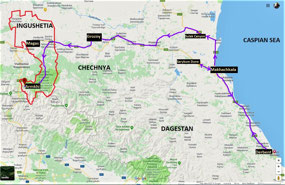
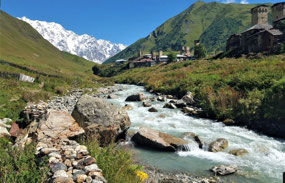
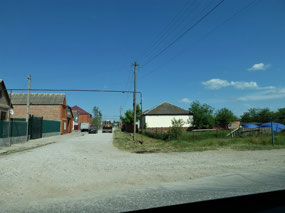
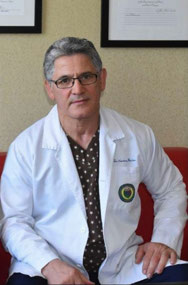
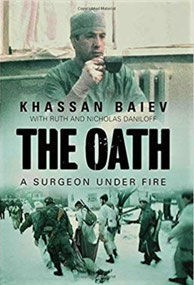
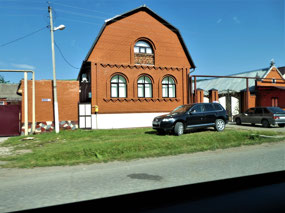
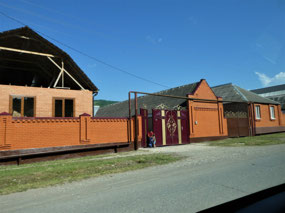
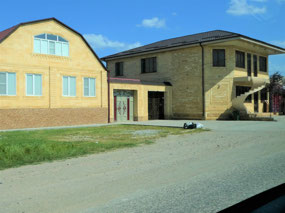
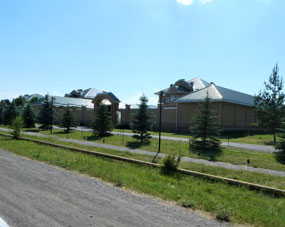

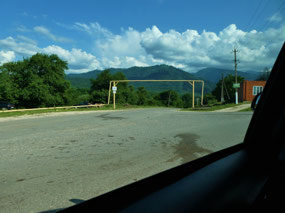
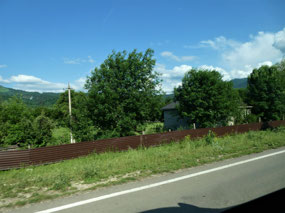
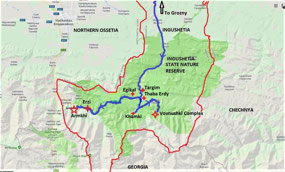
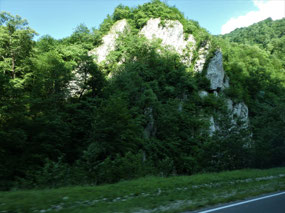
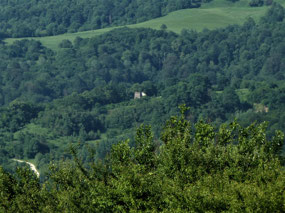
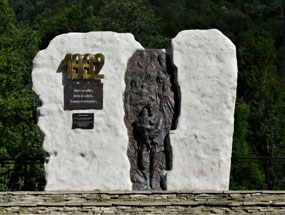
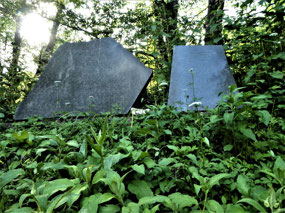
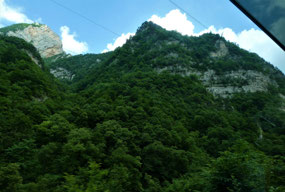
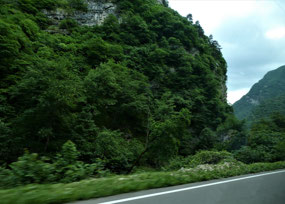
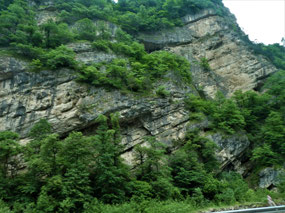
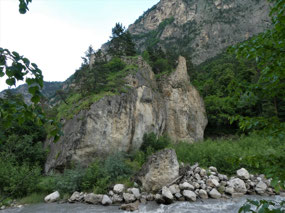
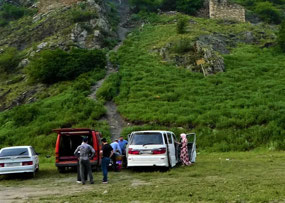
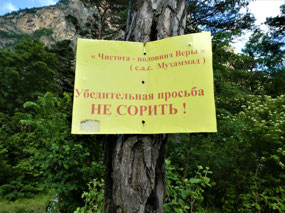
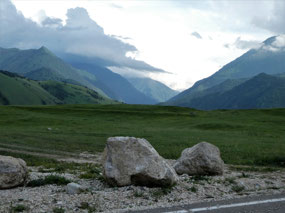
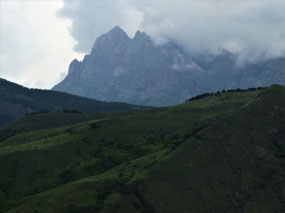
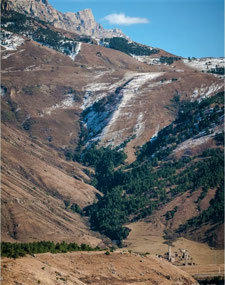
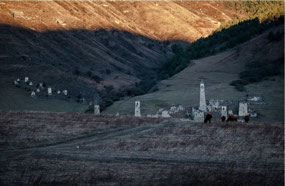
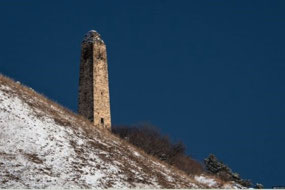
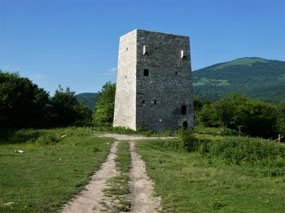
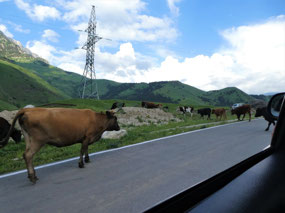
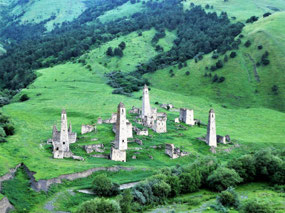
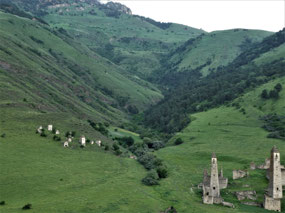

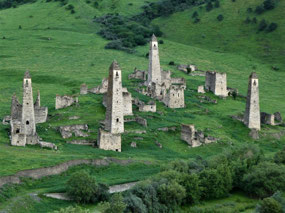
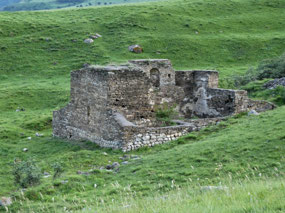
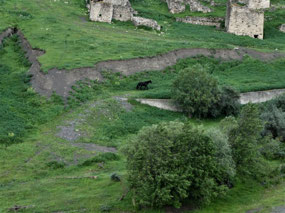
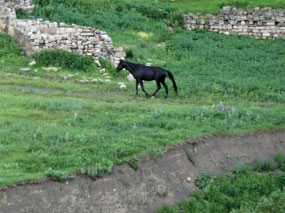
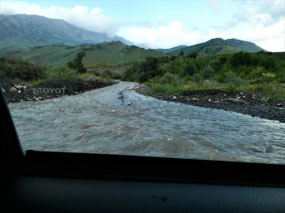
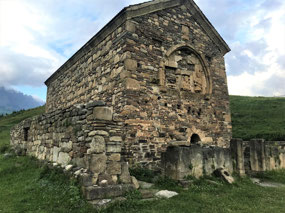
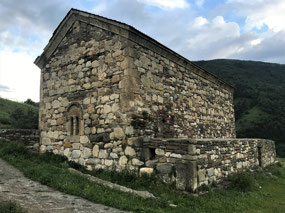
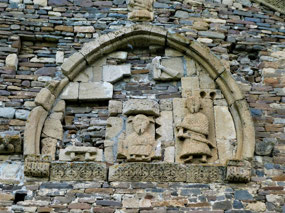
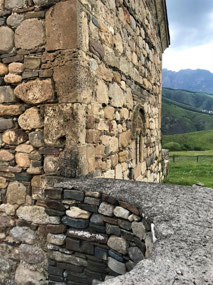
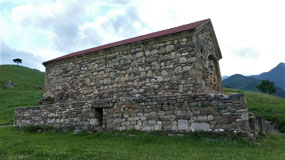
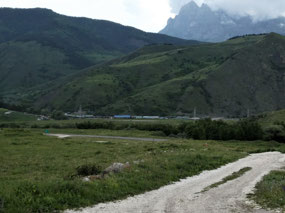
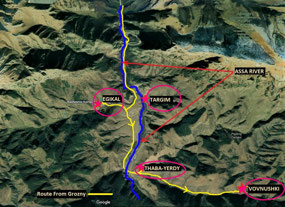
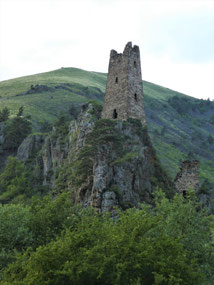
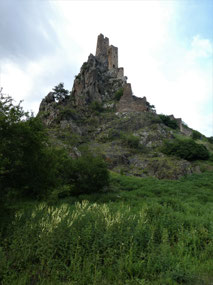
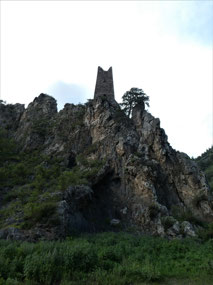
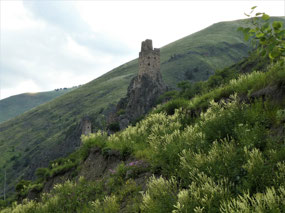
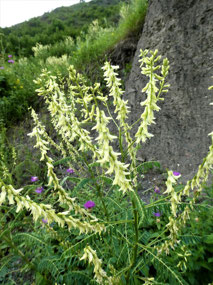

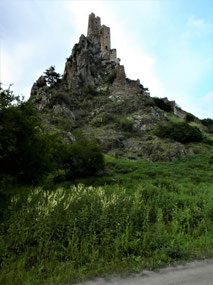
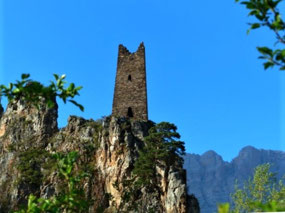
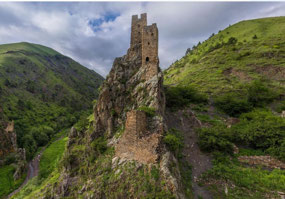
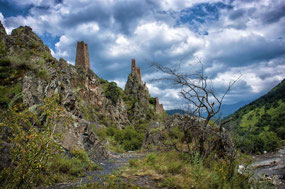

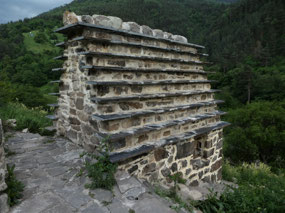
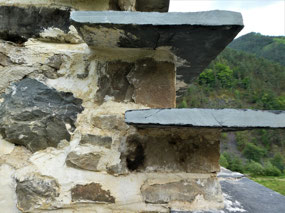
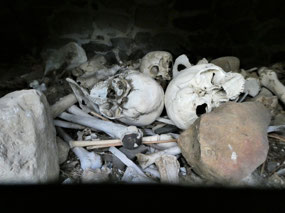


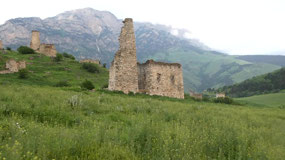
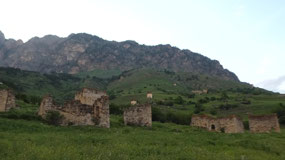
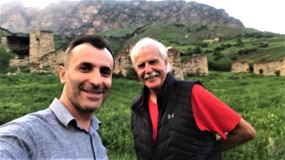
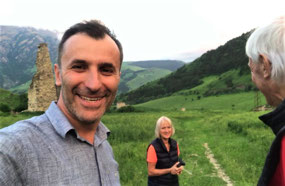
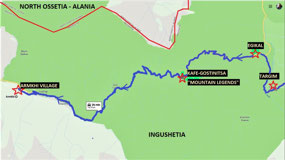
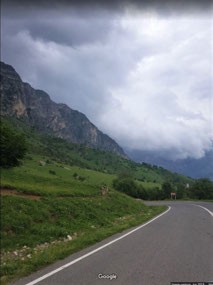
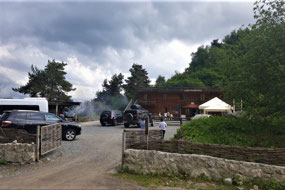



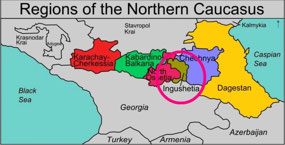

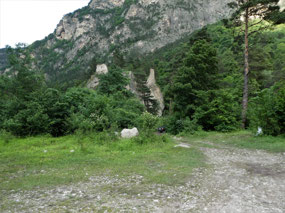
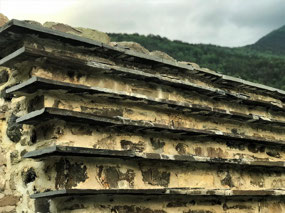
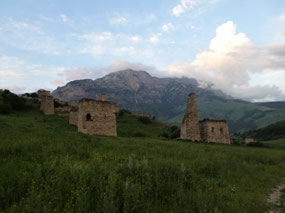
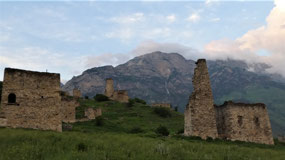

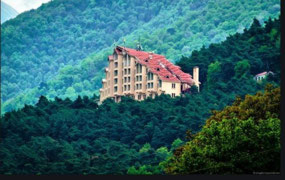
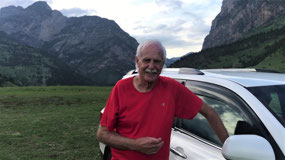
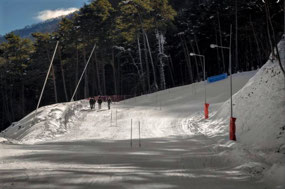
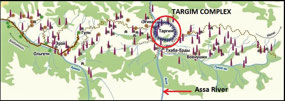
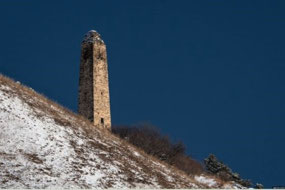

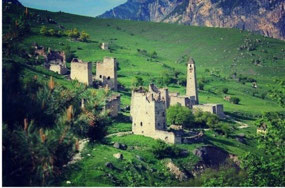
Donna
2023-11-24
Thank you, I really enjoyed your travel diary and the wonderful photos! It reminds me of my solo trip with a driver in Northern Afghanistan in 2008, as well as my exploration of the area between Erzurum and Kars in Eastern Turkey, including the ruins of the ancient city Ani. I had a similar "dinner" experience at a hostel in Barhal, Turkey, where I also stayed overnight. To conclude, you were both very brave, but achieved a travel experience shared by few and the memory of it will be with you forever.